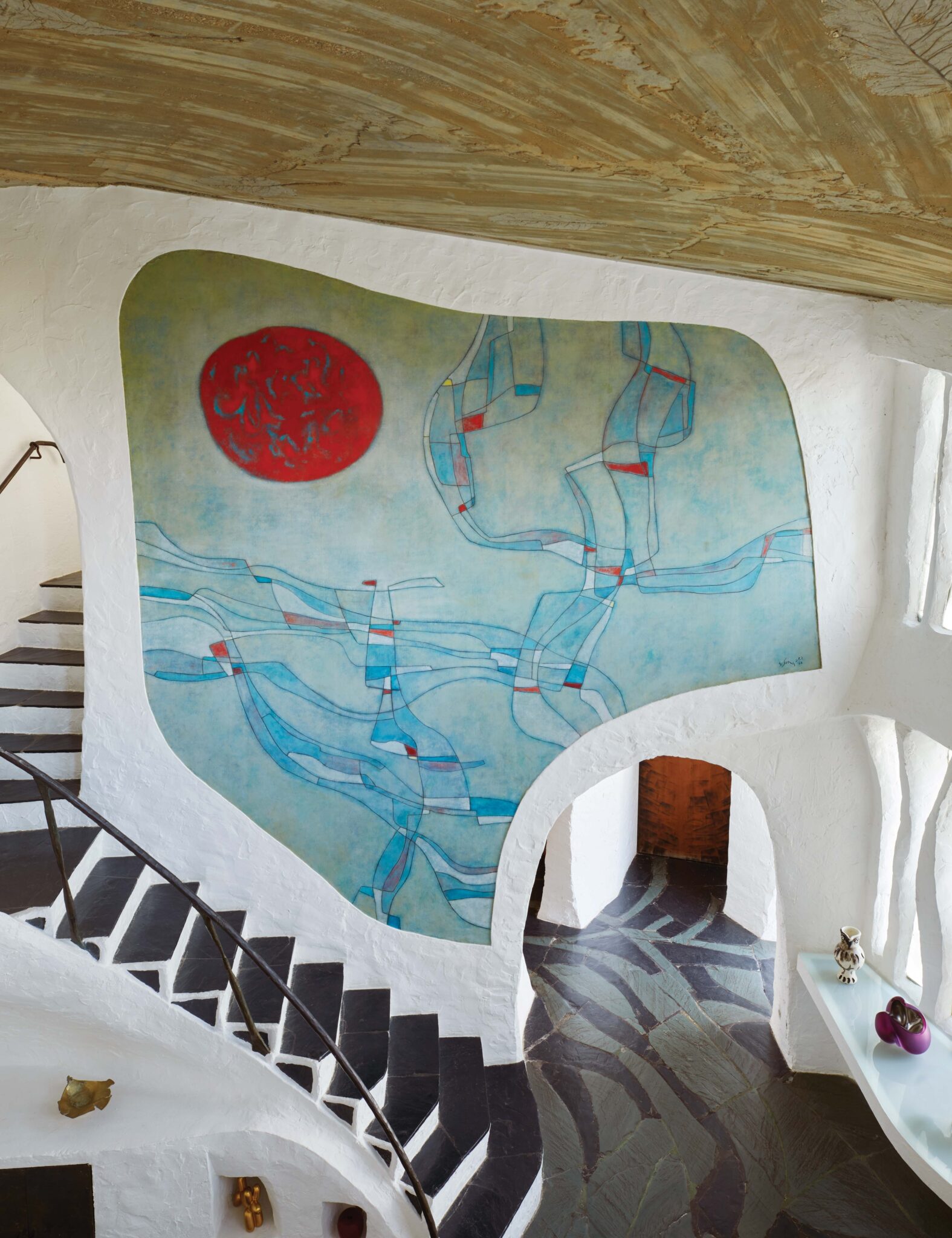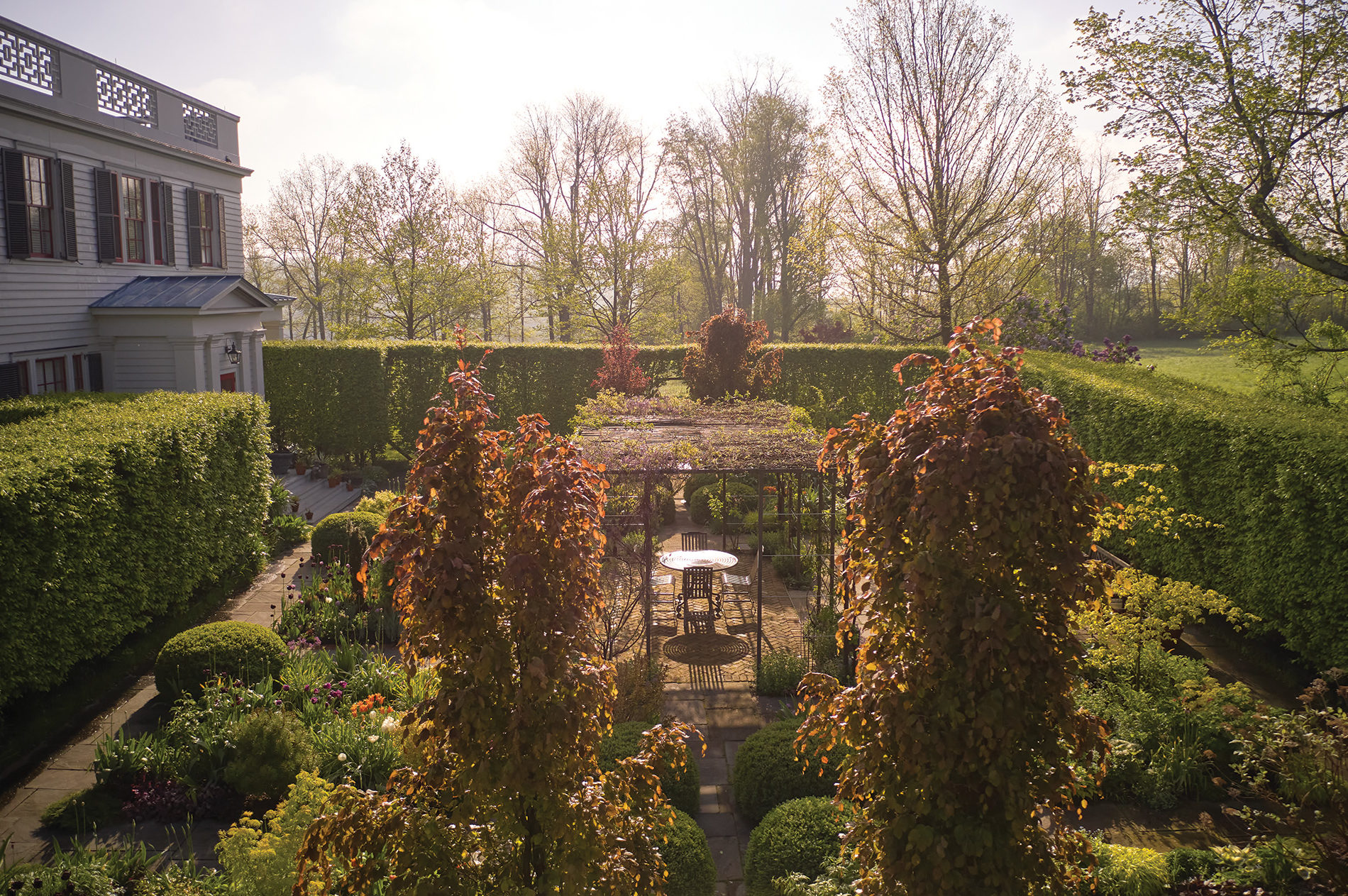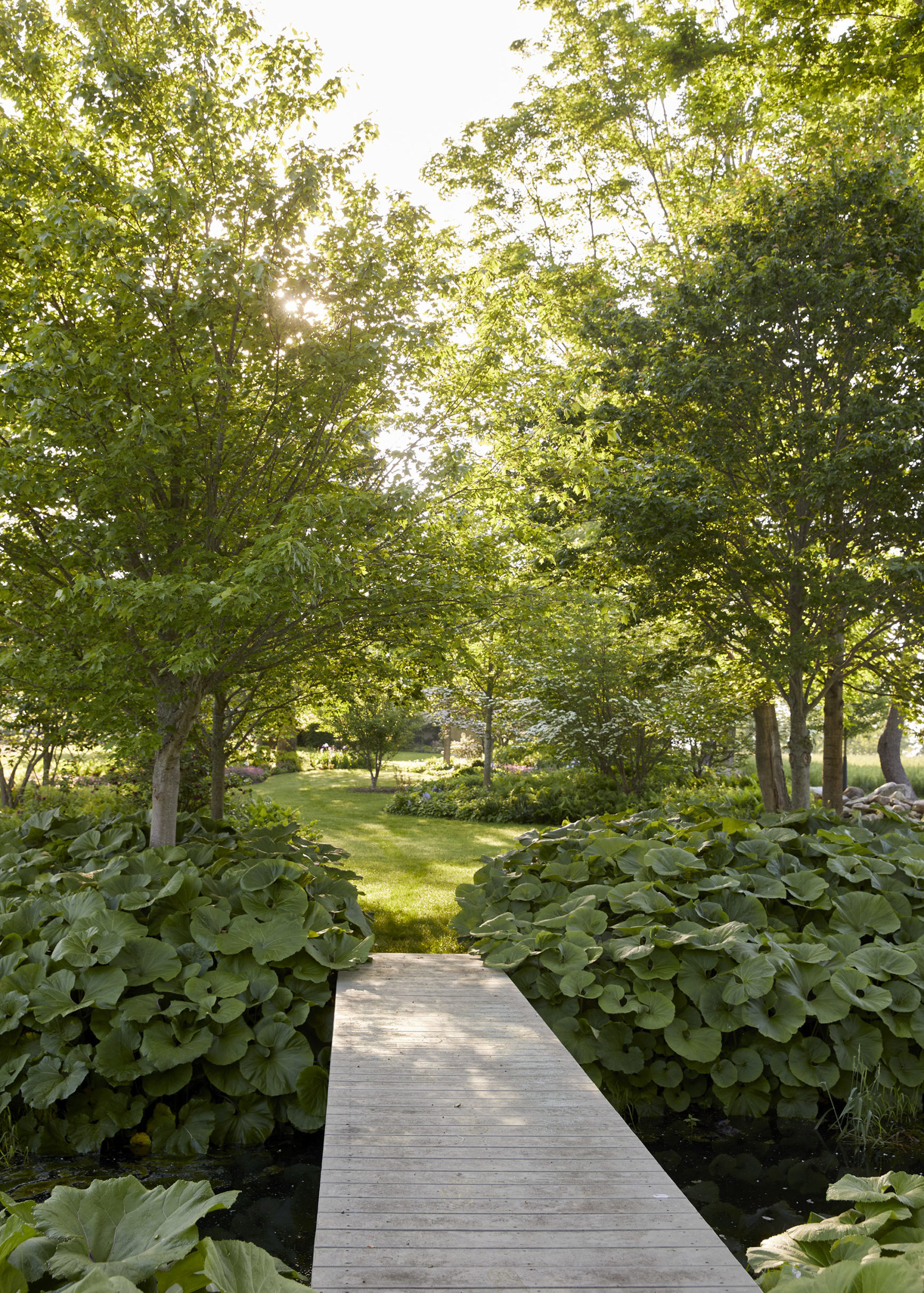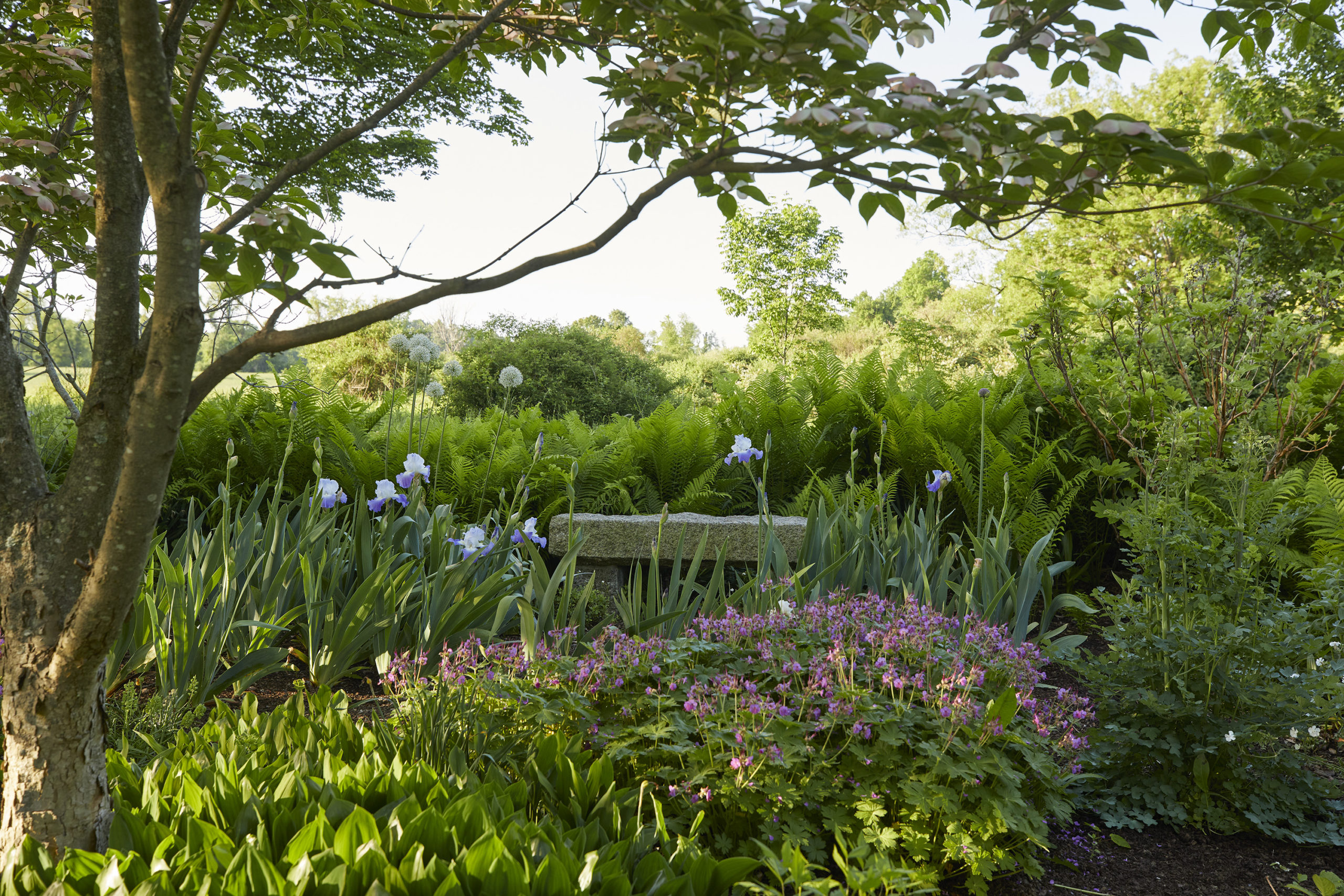Rising above the rolling hills of Millbrook, New York, its stately white exterior punctuated by lipstick-red trim and midnight-blue shutters, the stately Greek Revival home of Katie Ridder has become an instantly recognizable part of the local land- scape. It is also the result of a true collaboration: Ridder’s husband, the architect Peter Pennoyer, designed the house itself; Ridder, a decorator, was responsible for its interiors—and, perhaps most notably, the surrounding gardens.
“To me, the garden was the most import- ant thing when we began planning,” says Ridder. “Apart from telling Peter that I wanted 12-foot ceilings downstairs, I had nothing to do with the architecture, to be honest—the landscape was what I was really focused on. And my garden got built before the house by about six months!”
-

Every summer, Katie Ridder’s garden in Millbrook, New York, explodes with a profusion of larkspur, oriental poppies and alliums. “The larkspur and poppies are self-seeding, so at the end of the season, I’ll just rip them up and shake the seeds around—I’ll end up finding the flowers blooming an acre away!” she says.
Francesco Lagnese -
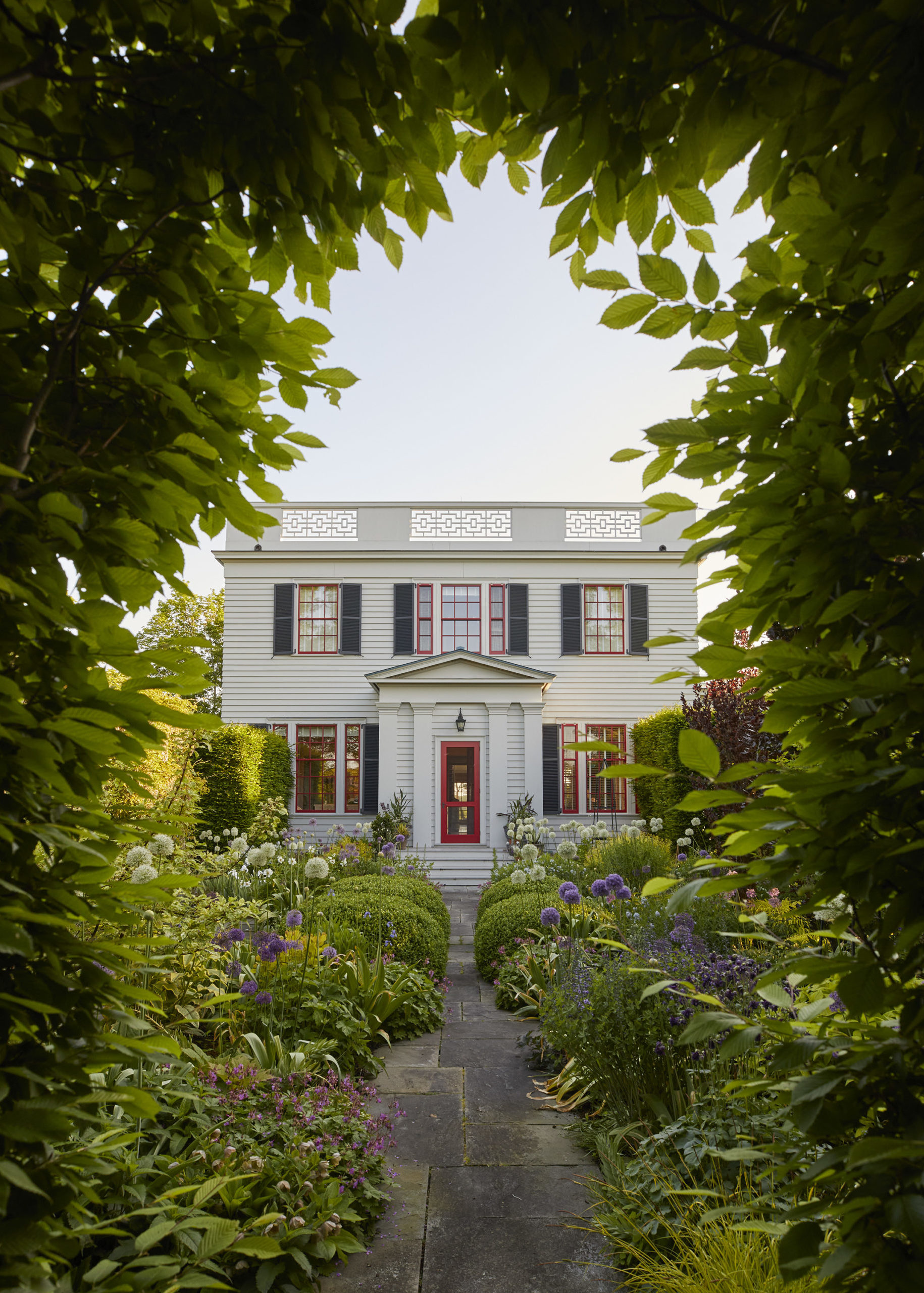
The façade of the Greek Revival–style house is framed through hornbeam hedges. Nearly two dozen different plants—lamb’s ear, Lady’s Mantle, echinacea, false indigo, hakone grass—line the walkway to the door.
Francesco Lagnese
-

A creamy ‘Cafe au Lait’ dahlia.
Francesco Lagnese -

Hydrangea paniculata ‘Limelight’ blooms into late fall.
Francesco Lagnese -
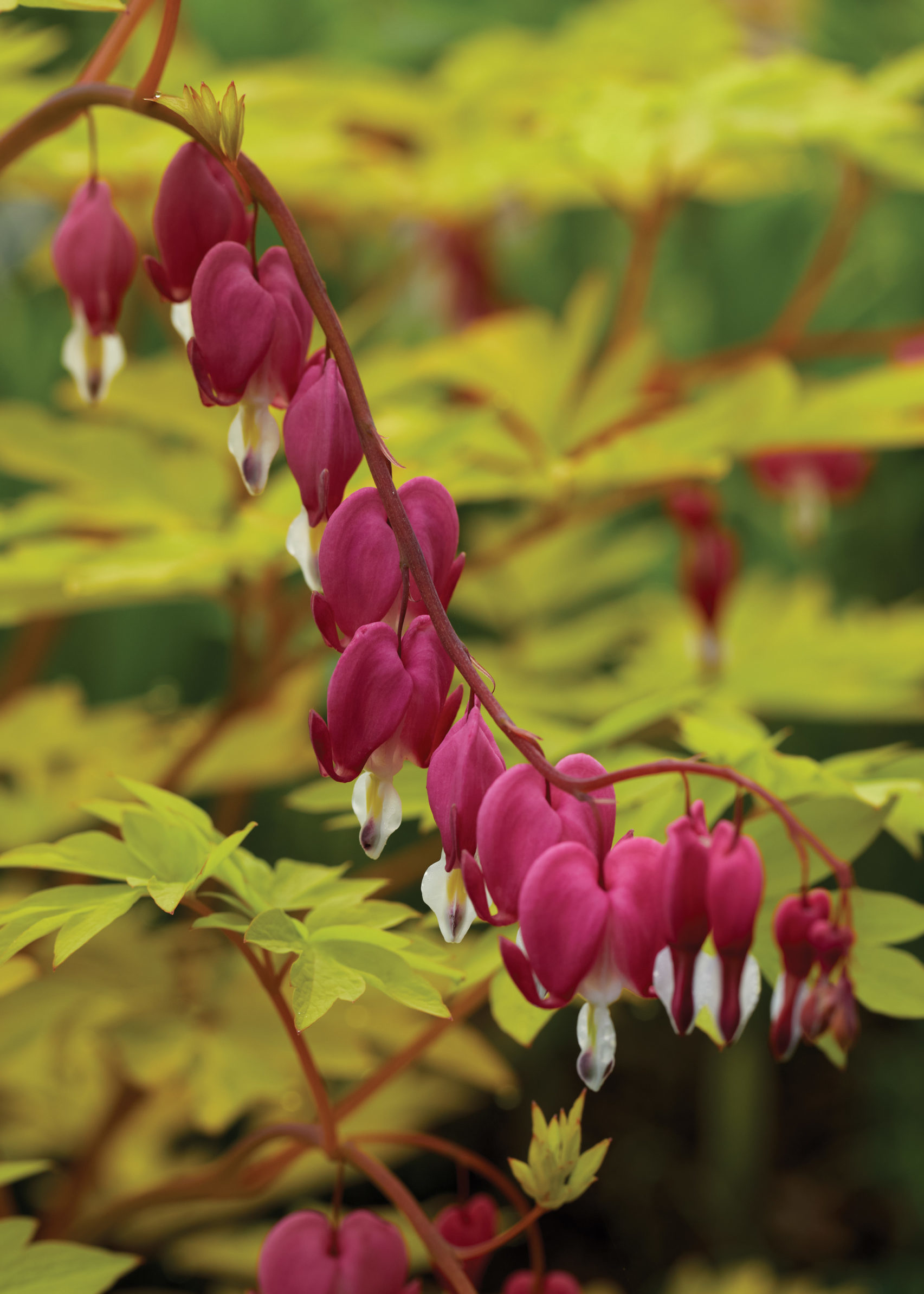
Bleeding heart in a moody magenta.
Francesco Lagnese
Ridder, who has been gardening for nearly 30 years, comes by her passion naturally: Growing up in California, she recalls watching her mother rigorously tend to her own garden, planting shrubs, laying brick paths, even installing her own watering system. Ridder later had gardens of her own—before buying the Millbrook property, she and Pennoyer lived in New York’s Westchester County (they also have an apartment in Manhattan)—but the six-acre Millbrook parcel presented the chance to design entirely from scratch.
After purchasing the property, Ridder spent a full year planning for her new project, reading books, studying the works of favorite gardeners, taking trips to nearby Wave Hill and the New York Botanical Garden to measure beds and layouts, and enlisted her friend, landscape architect Edmund Hollander, to help draw up a master plan. “I knew I wanted the corners to be grounded with boxwood, I wanted it to be very overgrown, and I wanted it to feel like you were going up and down these paths with plants surrounding you,” she says.
Ridder had a long wish list of perennials, shrubs and bulbs—lamb’s ear, dahlia, heuchera, reed grass, variegated Solomon’s seal and amaranth— in addition to plants brought from the Westchester house, including a beloved kerria that she had purchased 28 years ago, before she even had a garden to plant it in. (It was kept going in pots, in the meantime.) Others were given to her by friends, like the garden writer Page Dickey, who provided many of the bulbs that grow in the woodland down by the pond. There were even souvenirs from travels abroad: Seeds bought at Great Dixter and Sissinghurst in England are now perennials in Millbrook.
Famously colorful in her interiors work, Ridder eschewed the concept of an overarching palette. “I approach gardening the same way that I approach decorating—I have to have every color,” she says. “It’s like painting a painting: I’m thinking about how much purple I have, how that should jump over to the next bed diagonally, how to balance it out. It’s controlled chaos.”
A Garden in Four Seasons
Trial and error has been a running theme in the garden, which Ridder refers to as her “laboratory.” Japanese beetles, which hadn’t been an issue in Westchester, attacked her new roses. (Thankfully, she discovered that she could have early blooming roses that flowered before the beetles came out.) The drip irrigation system installed under the beds made the soil too moist for artemisia, which had to be abandoned. Overcrowded beds had to be pared back. “I had way too many plants,” Ridder admits. “Learning about scale and figuring out how big things would get was one of the hardest parts of the process.”
-

Woodland peony thrives in shade.
Francesco Lagnese -

A variety of purple tulips.
Francesco Lagnese -

Fritillaria is another favorite bulb.
Francesco Lagnese
Over the past near-decade, the property has continued to evolve. “I keep adding and subtracting—if something isn’t working, I’ll just rip it out and compost it. I can’t deal with plants that aren’t happy!” she says. She’s planted more evergreens to add life to the garden in winter; many of her annuals last for the better part of three seasons. And shrubs and grasses have gained higher status: “All the great gardeners say that you shouldn’t just look at the flowers, because they last for maybe a week,” Ridder says. “When I first started gardening, it was all about the flowers. Now, it’s the foliage that’s important.”
THIS STORY ORIGINALLY APPEARED IN THE FALL 2022 ISSUE OF FREDERIC. CLICK HERE TO SUBSCRIBE!
